Arborvitae Lumber
A discussion of the likely lumber characteristics of a yard tree described as Arborvitae. May 18, 2010
Question
I just received several arborvitae logs today from one tree which was 90 years old. They range in diameter from 40" to 14", consisting of about 800 board feet all in all. Does anybody have any experience with this wood? It reminds me of dawn redwood and eastern red cedar. Looking on the end grain it's like a dense dawn redwood. The smell is distinctly different from DR and ERC, yet the bark is a perfect combination of the two. The leaf is entirely different than DR, but similar to ERC yet still different. My last experience with dawn redwood proved to me that it is simply too soft to be of a high quality, but this arborvitae seems to be something very nice and different!
Forum Responses
(Sawing and Drying Forum)
From contributor Y:
Arborvitae is another name for northern white cedar. Mostly used for shingles and fences.
From contributor W:
It was also used for interior millwork and paneling.
From the original questioner:
In my tree books, there is a difference made between arborvitae, and northern white cedar. I will research this more, but the wood is reddish, and I thought northern white was whiter. Am I wrong?
From contributor H:
Arborvitae and juniper both have wood that looks and smells like red cedar.
From contributor Y:
If you have a yard tree, and not something native to NJ, then it could be any of several trees in the genus Thuja which are all sometimes called arborvitae. These include western redcedar (Thuja plicata), and a couple of Asian species as well as northern white-cedar (Thuja occidentalis). There is also Atlantic white cedar which is not a thuja but related to Port Orford cedar. As far as color goes, I've see NWC that is about as dark as the lighter color of some of the second growth WRC.
From the original questioner:
I have about a half dozen good tree identification books, and I have been researching in my least favorite book, Field Guide To Trees (eastern region) by the Audubon Society simply because their pictures are in clear to see color. The downside to this book is that the descriptions are broad, and some pictures are wrong, and many pictures depict very young or very old trees which can sometimes deceive the trees general visual characteristics. Sooner or later somebody needs to write up an extremely detailed tree book that actually includes trees of different ages, with bark of the ages, old growth/new growth and other variables. I could go on and on in detail in this subject!
It is unfortunate that good identification books out there like The Illustrated Book Of Trees, by William Carey Grimm are not in color for better clarification. Through my internet google image searches I have found that there is a difference between northern white cedar (Thuja occidentalis) and Oriental Arborvitae (Thuja orientalis). From the start of finding this tree my business partner has suggested that this tree is simply a huge Thuja orientalis, but now that you have helped me discover the great possibility that is a Thuja occidentalis I am swayed to believe it is in fact a Northern white cedar which was planted 90 years ago in 1919, here in New Jersey.
From contributor Y:
Here's a scan of the range of colors (that I had on hand) for Thujas that are native to the US. The first two are western red cedar, the last two are northern white-cedar.
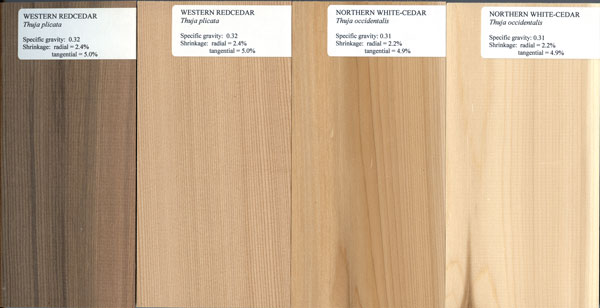
Click here for higher quality, full size image
From the original questioner:
Here are some of the pictures of this tree.
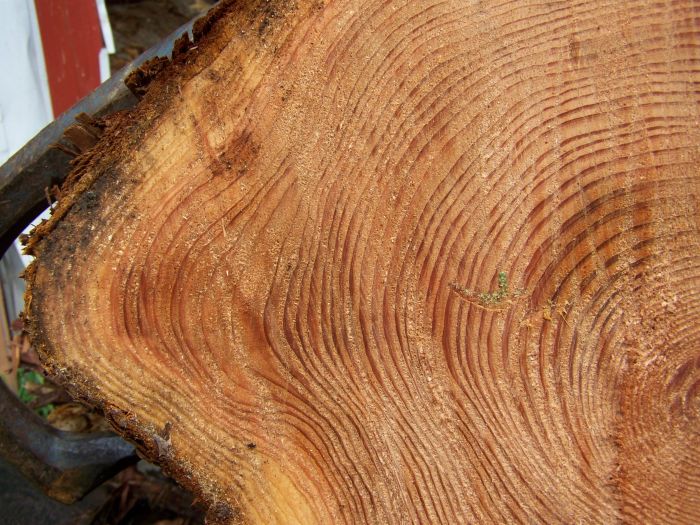
Click here for higher quality, full size image
Here's a picture of the butt log. This tree was cut extremely close to the ground and exhibits three original trees combined into one.
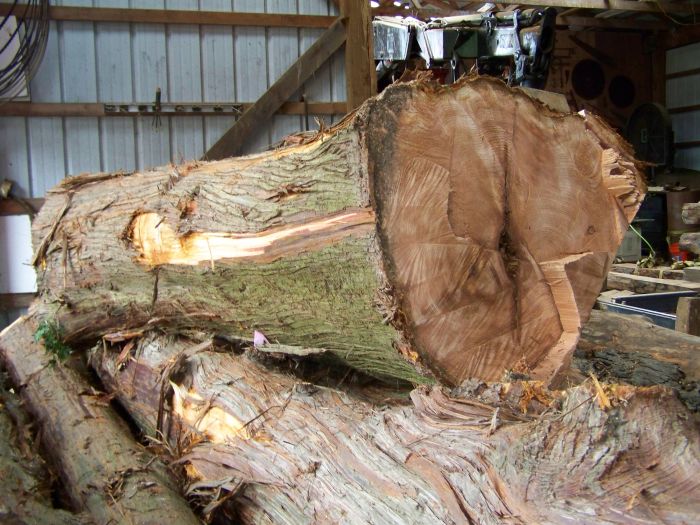
Click here for higher quality, full size image
Here's a picture showing the bark of the logs I have. The leaf on the left is from the tree I have, and the leaf on the right is from an arborvitae. (I just happen to have a neighbor with 100's of arborvitaes in his nursery)!
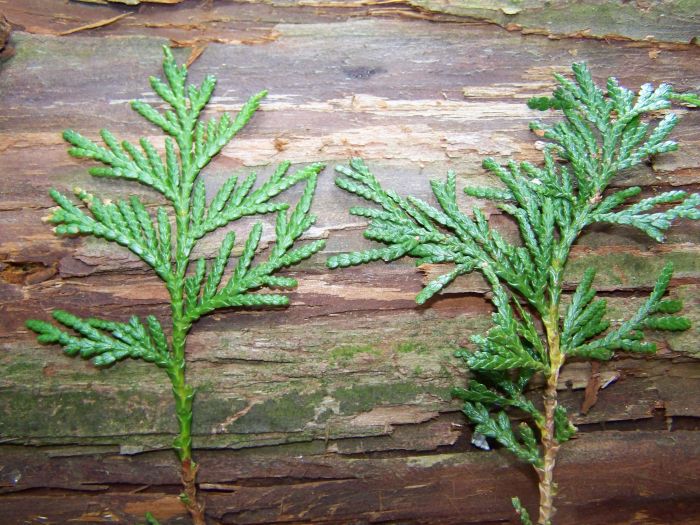
Click here for higher quality, full size image
Here's another end grain picture.
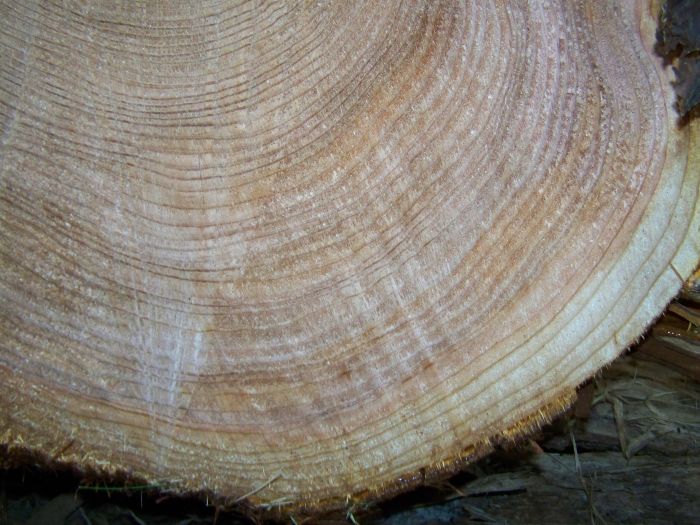
Click here for higher quality, full size image




